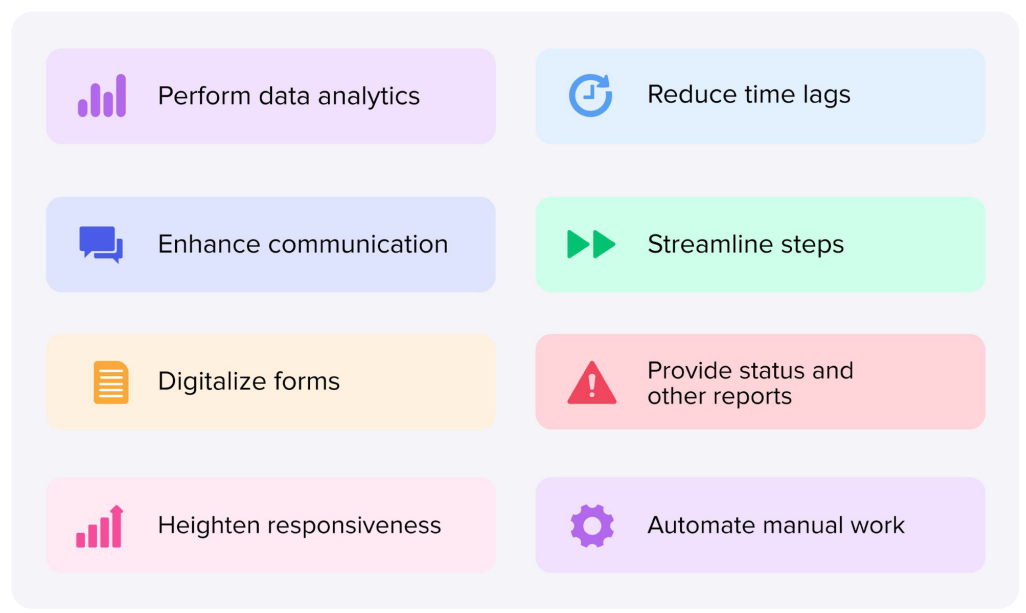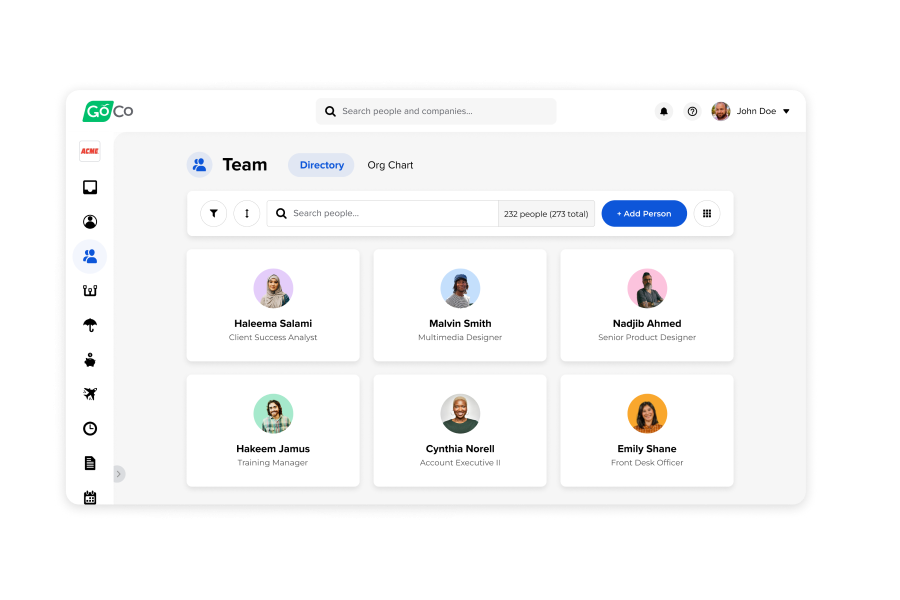The Quest for Perfect HR: A Buyer's Guide for SMBs
Need help navigating the world of HR tech vendors? Download this complete guide & feature checklist today to make selecting an HRIS for your company a breeze!
by Anna Coucke - March 8th, 2024

Introduction
Finding and choosing the right HR technology can feel like a quest to find the Holy Grail: countless paths, shadowy figures, and, perhaps, a few mythical beasts (i.e. complex features and confusing interfaces) to slay.
Fear not, valiant human resources professional! This comprehensive HRIS Buyer's Guide will serve as your trusty guide, equipping you with the knowledge and tools to vanquish the challenges of HR tech selection.
Within its pages, you'll find essential questions to ponder, both for yourself and your organization, along with wisdom on engaging with potential vendors.
Embrace this free resource, and soon you'll be well on your way to forging a legendary partnership with the perfect HR tech companion, ready to streamline your HR processes and unleash a new era of efficiency.
How Can Technology Help HR Professionals?
On average, HR professionals spend around 20% of their time doing administrative tasks. Just think of how much time is spent on manual work associated with HR’s primary functions at your organization, including data entry, corrections, backing up files, filing paperwork, and collecting information.
Technology like an HRIS can and automate these tasks help free up HR resources to focus on more strategic matters while reducing the likelihood of problems, delays, omissions, and even inconsistencies – along with the costs associated with correcting these errors. In addition, storage of often sensitive, confidential information can be more secure and easily accessed.
An HRIS acts as a central hub for all your employee data and functions, offering a wide range of benefits to HR professionals. Here are some of the ways implementing an HRIS can improve HR functions at your organization.
 Streamlined Processes
Streamlined Processes
An HRIS reduces paperwork and improves organization by eliminating the need for paperbased filing and centralizing employee information like contact details, benefits enrollment, and performance records. This allows for easy access, retrieval, and updating of information – saving time and effort.
With an HRIS, repetitive administrative tasks like data entry, leave requests, and time-off tracking can be automated, freeing up HR professionals to focus on more strategic initiatives.
Enhanced Efficiency and Accuracy
A centralized system improves data accuracy and minimizes data duplication and inconsistencies, ensuring accurate and up-to-date information across all HR functions. Additionally, automating tasks like payroll calculations and benefits enrollment reduces the risk of human error, improving overall efficiency and compliance.
Regulatory Compliance
Some HRIS solutions like GoCo offer features that help HR departments manage compliance with complex labor laws and regulations, reducing the risk of non-compliance and associated fines and lost time.
Data-Driven Decision Making
An HRIS provides valuable reports and analytics on various aspects like workforce demographics, performance metrics, and trends. This data empowers HR professionals to make informed decisions about vital initiatives including talent management, recruitment strategies, and employee engagement.
With the ability to analyze historical data and identify trends, HR can anticipate future needs and proactively develop plans for workforce development and talent acquisition.
Improved Employee Self-Service
HR platforms often provide an employee self-service portal where employees can access their paystubs, benefits information, and other documents, reducing the need for HR intervention and increasing employee autonomy.
An HRIS can also facilitate communication between HR and employees by providing a platform for announcements, feedback, and information sharing, fostering a more transparent and collaborative environment that enhances employee engagement and satisfaction. facilitate communication
Focus on People, Not Paperwork
These are just some of the benefits that an HRIS can provide. Overall, the implementation of an HRIS frees up time and empowers HR professionals to become strategic partners within their organizations, allowing them to focus on employee development, engagement, and proactive talent management – not paperwork.
How To Identify Your HR Tech Needs and Priorities
Selecting and engaging technology to assist in talent management requires informed consideration. The repercussions of such decisions last well into the future. Choosing the right technology solution requires planning and forethought. Depending on your organization, it may also be necessary to build a business case for an HRIS to present to leadership.
Questions to Ask When Choosing an HR Technology Provider
Here's a breakdown of crucial questions HR professionals should ask themselves and sales representatives when evaluating HR technology providers.
Functionality and Fit
Does the system's functionality align with our needs? Carefully consider the core features the HRIS needs to offer your organization (e.g., payroll, benefits administration, time tracking, recruitment, performance management, and reporting) and ensure the provider can match those requirements
Can the system handle our company size and growth projections? Assess if the HRIS is designed for businesses of your size and whether it can scale alongside your anticipated growth
How customizable is the system? Find out the degree of flexibility for tailoring the HRIS interface, workflows, and reports to match your specific processes.
Technology and Integrations
How easily does the system integrate with our existing software? Seamless integration with your current payroll, accounting, or other HR-related systems that you want to keep is crucial to avoid data silos and streamline processes
What is the level of data security offered? Scrutinize the provider's security measures, certifications, and encryption standards to safeguard your employees' sensitive information.
Vendor and Support
Does the vendor have a good reputation and industry expertise? Research the vendor's track record, customer references, and financial stability
What is the implementation process like? Clarify the scope of assistance the vendor provides during setup, data transfer, and user training
What is the level of ongoing support and maintenance available? Understand the support channels (phone, email, live chat), support hours, and any additional support fees.
Cost and ROI
What is the pricing structure? Determine if it's subscription-based, based on the number of employees, or a one-time purchase. Get a detailed breakdown of costs, including licensing, setup, customization, and ongoing support
How will the HRIS contribute to cost savings/efficiency gains? Quantify the potential return on investment (ROI) in terms of time saved on administrative tasks, streamlined processes, and improved decision-making. Want to calculate just how much an HRIS can save your organization? Check out our ROI calculator!
Additional Considerations
What is the user experience like? Assess the system's intuitiveness and ease of navigation for both HR and employees
What do user reviews say? Explore independent reviews and ratings of the HRIS providers from reputable sources
Does the vendor offer a free trial or demo? Requesting a hands-on tour or customized demo allows you to evaluate the system in practice.
Before approaching vendors, prioritize a thorough needs analysis within your organization. Having a clear understanding of your HR pain points and requirements will enable you to find the HRIS provider that offers the best fit for your organization.
After evaluating several vendors and comparing them to each other, as well as to your needs and wants baseline, you should feel comfortable making a selection. Depending on the sophistication and complexity of your company’s buying process, you may employ various rankings or ratings that feed an overall scoring method. Seek to negotiate a partnership that meets your needs without breaking your budget.
HR Software Attributes Criteria Checklist
Once you have established what your organizations’ needs are, it is critical to establish a list of requirements to allow you to evaluate each potential provider against a criteria baseline. This list will obviously vary based on what your business needs are, but may look something like this:
Meets the “must have” requirements outlined by your buying team
Is transparent in what it does and how it works with clients
Provides sound data integrity and protection of sensitive data
Shows evidence of efficiency improvements and other savings
Is scalable and thus able to accommodate a growing and changing organization
Has the bandwidth (breadth and depth) to handle the business
Provides ongoing client support with timely access and response
Has an established track record within the HR technology field and for your type of business
Can accommodate customization and other current and future enhancements and changes
Is capable of providing updates based on evolving legal compliance requirements
Has sufficient backup of operations and data storage
Can integrate with your existing systems and processes
Is a good match regarding company culture and values
Is well-positioned to support your organization as it continues to adjust to changes in your workplace
Can transition their solutions into your organization without excessive business disruption
The degree of subcontractor use is acceptable and overall contractability conditions are reasonable
How to Measure HRIS Success
Once you have chosen an HR software provider, it is important to evaluate the new system to ensure that it is successfully meeting expectations. Here's a breakdown of the key areas HR professionals should assess after implementing a new HRIS:
Success Metrics and KPIs
Adoption and usage rate: How actively are employees and HR staff using the system Are there specific functionalities being underutilized
Process efficiency: Are HR processes faster and smoother: Measure time savings in areas like onboarding, payroll processing, or report generation
Data accuracy: Is the data within the HRIS reliable, complete, and up-to-date
Employee satisfaction: Conduct surveys to gauge how satisfied employees are with the new system, their user experience, and if it meets their needs
Compliance: Analyze whether the system helps with maintaining regulatory compliance with ease.
Areas for Improvement
Bottlenecks and pain points: Identify any new workflow challenges or issues users are facing
Training gaps: Are more training sessions needed for certain user groups or functionalities
Feature underutilization: If certain features are going unused, investigate the reasons (lack of training, not relevant to the company's processes, etc.)
Potential for optimization: Identify areas where the system could be further customized or integrated with other business tools.
How to Evaluate
Set benchmarks: Compare your metrics to pre-implementation baselines to measure improvement.
User feedback: Conduct regular surveys and focus groups to gather feedback.
System audits: Perform regular reviews to check data quality and process efficiency.
Vendor relationship: Proactively communicate with the HRIS vendor for optimization and new feature opportunities.
Once you have established the metrics and KPIs you want to measure, remember to keep in mind that HRIS implementation is an ongoing process. Continuous evaluation and adjustments are needed to maximize the value of your HRIS investment and support the overall success of your HR department.
Level Up Your HR with an All-in-One HRIS
HR professionals seeking an all-in-one solution for HR management should look no further than GoCo.
Our intuitive, user-friendly platform streamlines all HR processes from onboarding to payroll and time tracking, consolidating everything into a single, centralized system.
GoCo empowers HR professionals to boost efficiency in their organization through automation and streamlined workflows, freeing up valuable time to focus on strategic initiatives. Additionally, employees benefit from self-service tools for tasks like benefits enrollment and accessing paystubs, fostering a sense of ownership and engagement.
As your organization grows, GoCo scales with you, ensuring your HR needs are met throughout every stage.
Plus, our award-winning customer service team is there to help every step of the way to ensure you are set up for success from the very start.
Let GoCo simplify your HR operations so you are empowered to focus on what matters most – your people.
Download the HRIS buyer's guide
Search...
Product
GoCo
Resources
Articles
eBooks
Webinars
Customer Stories
